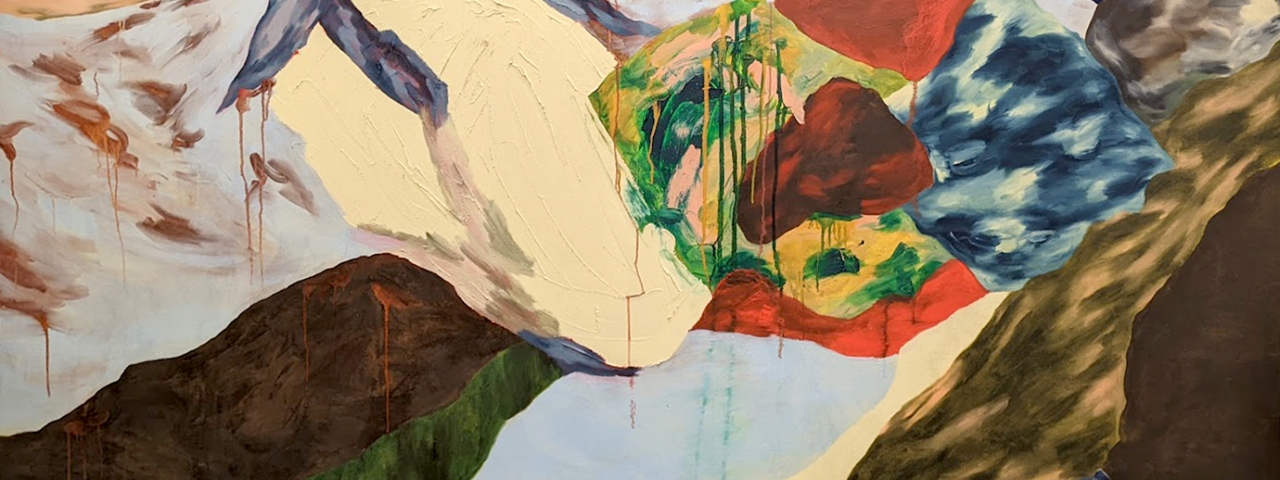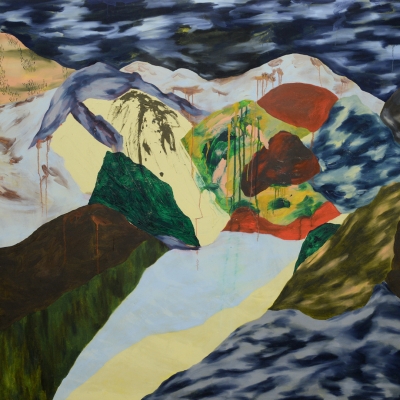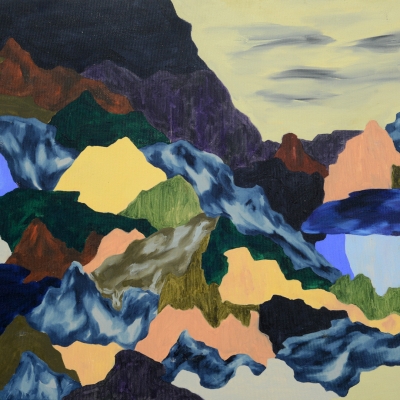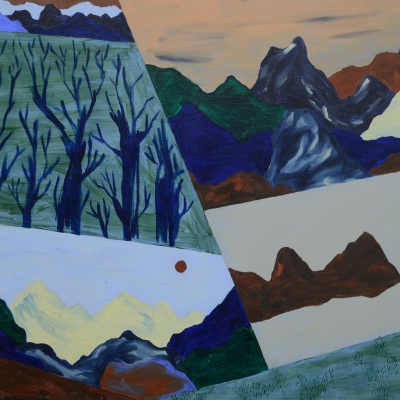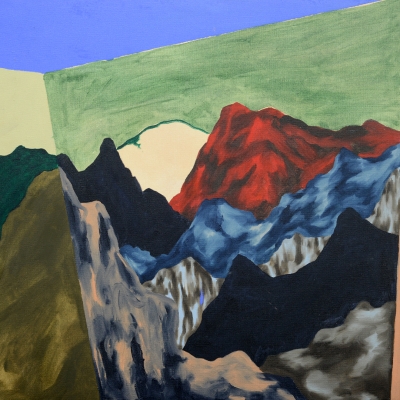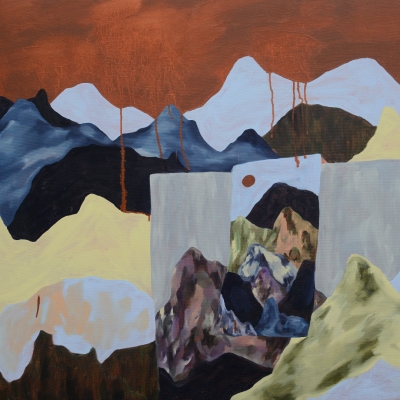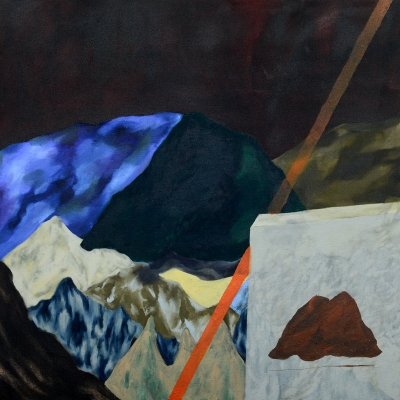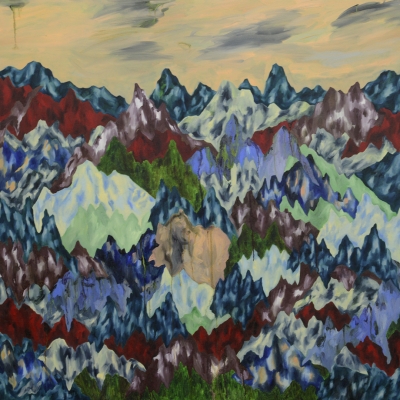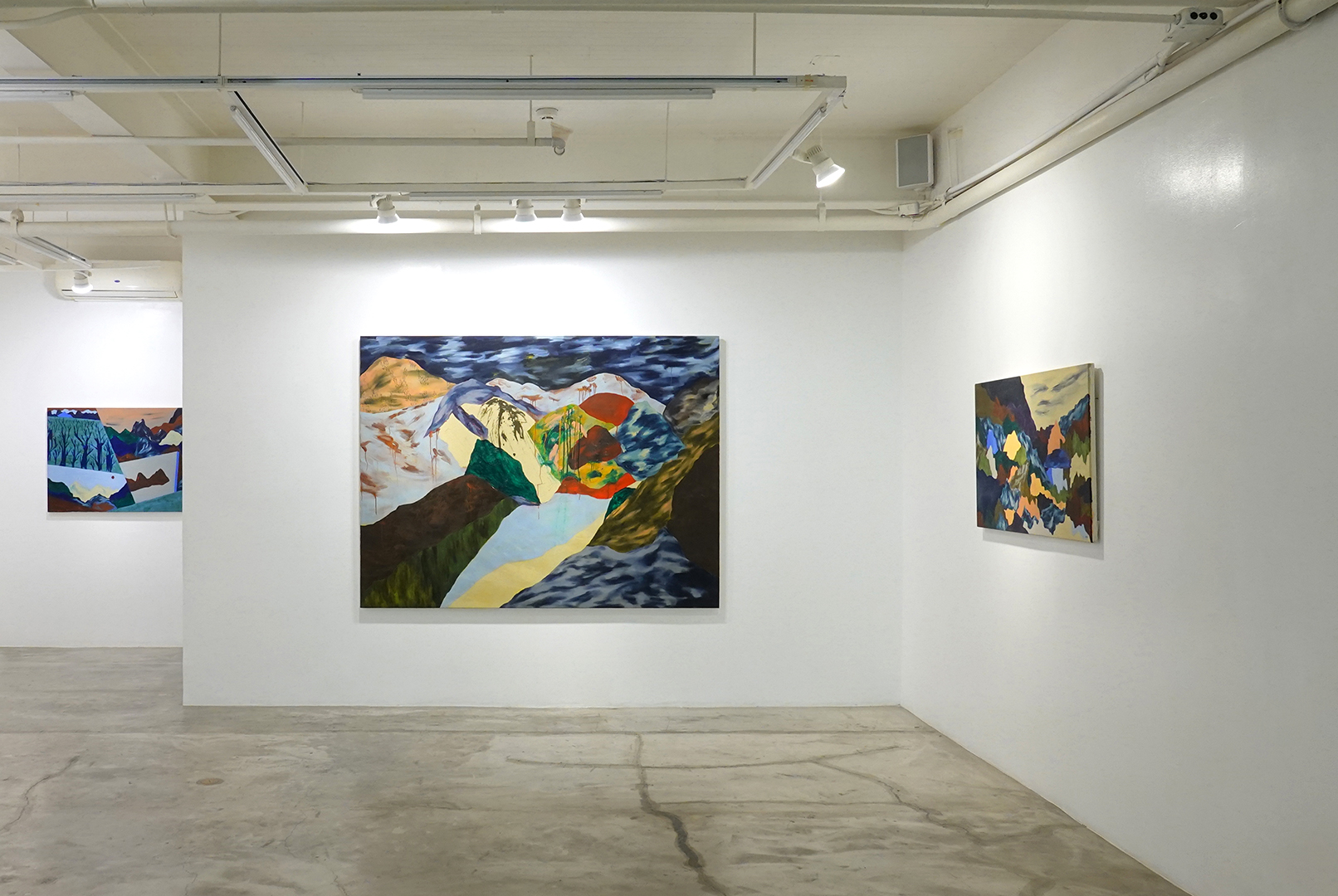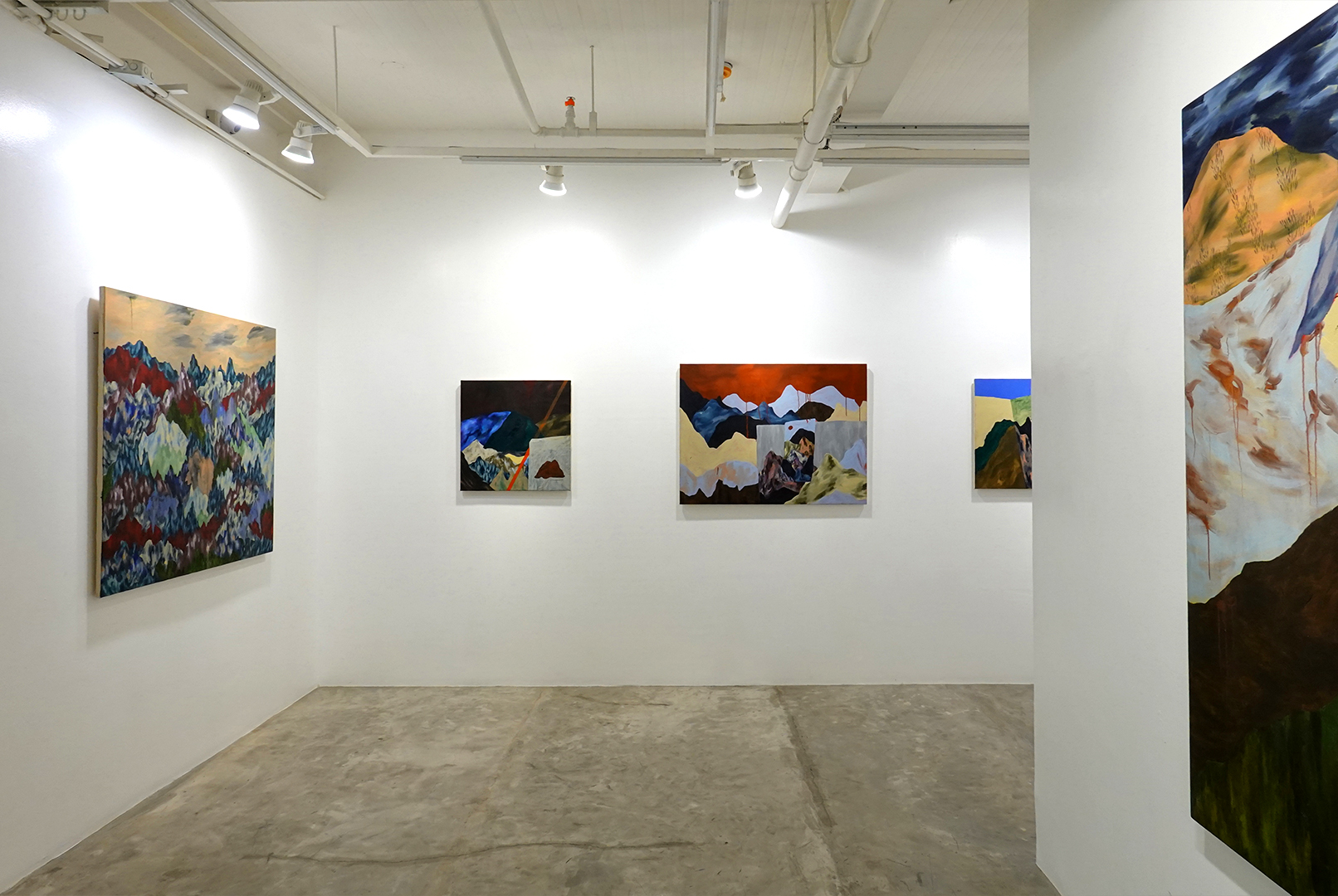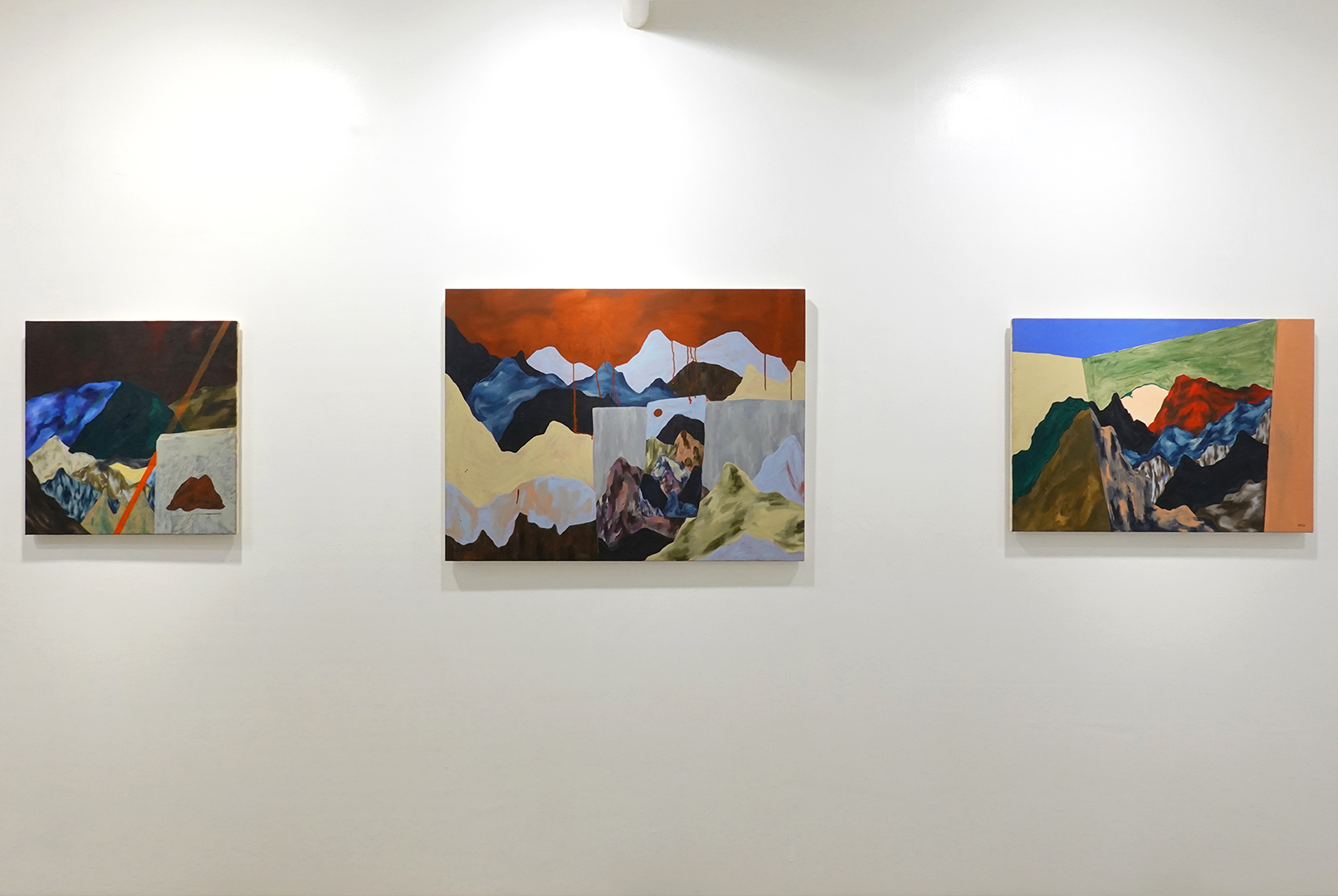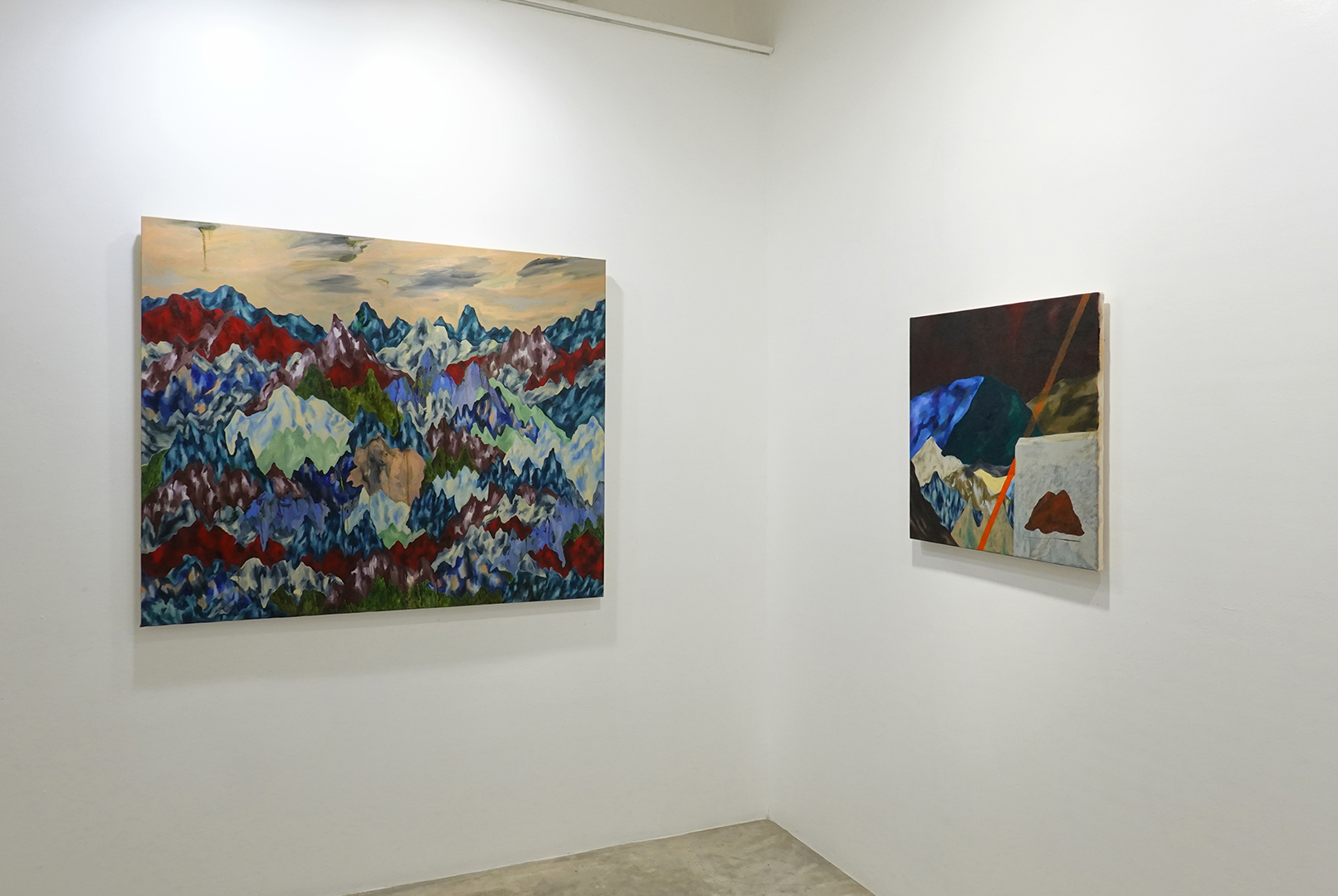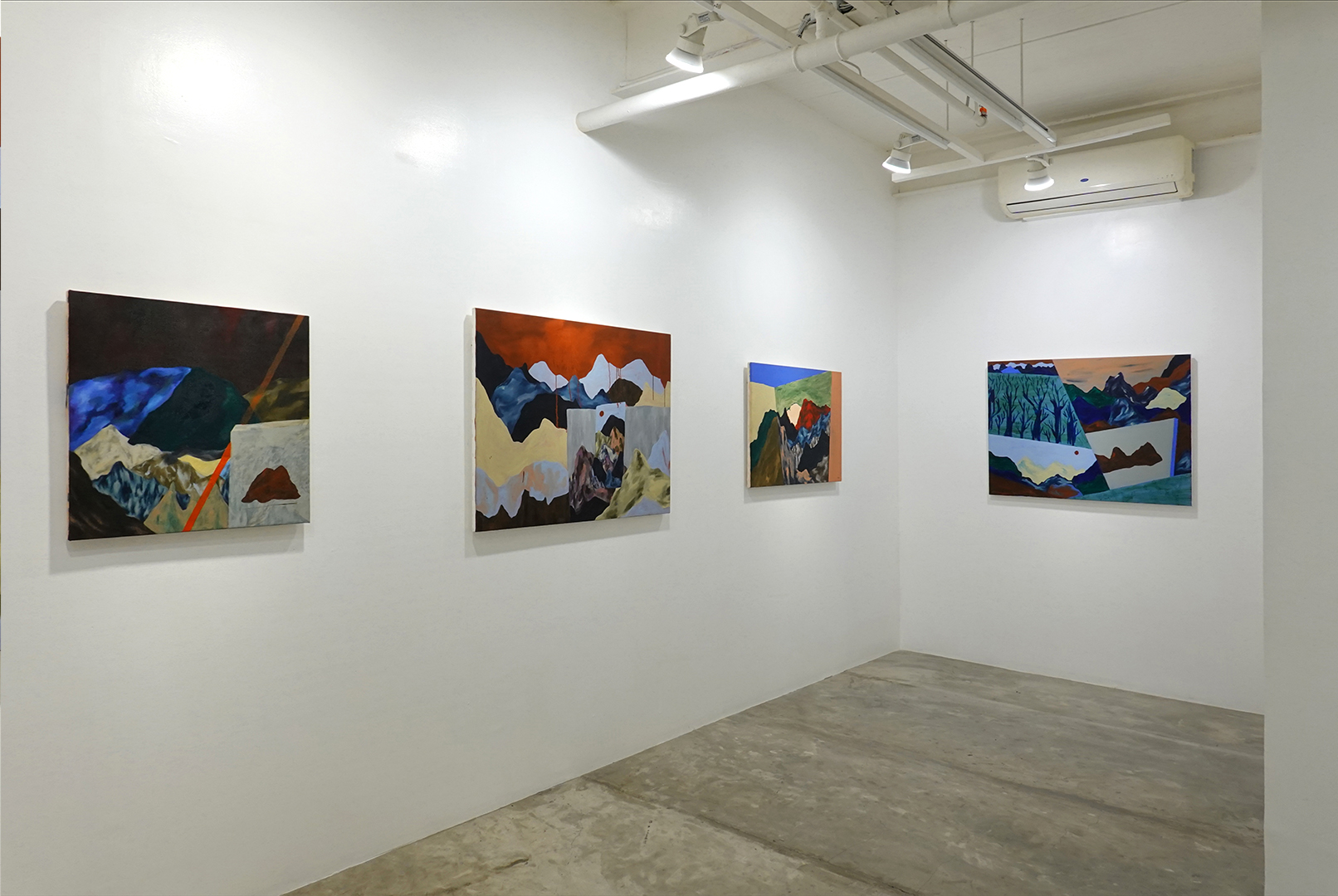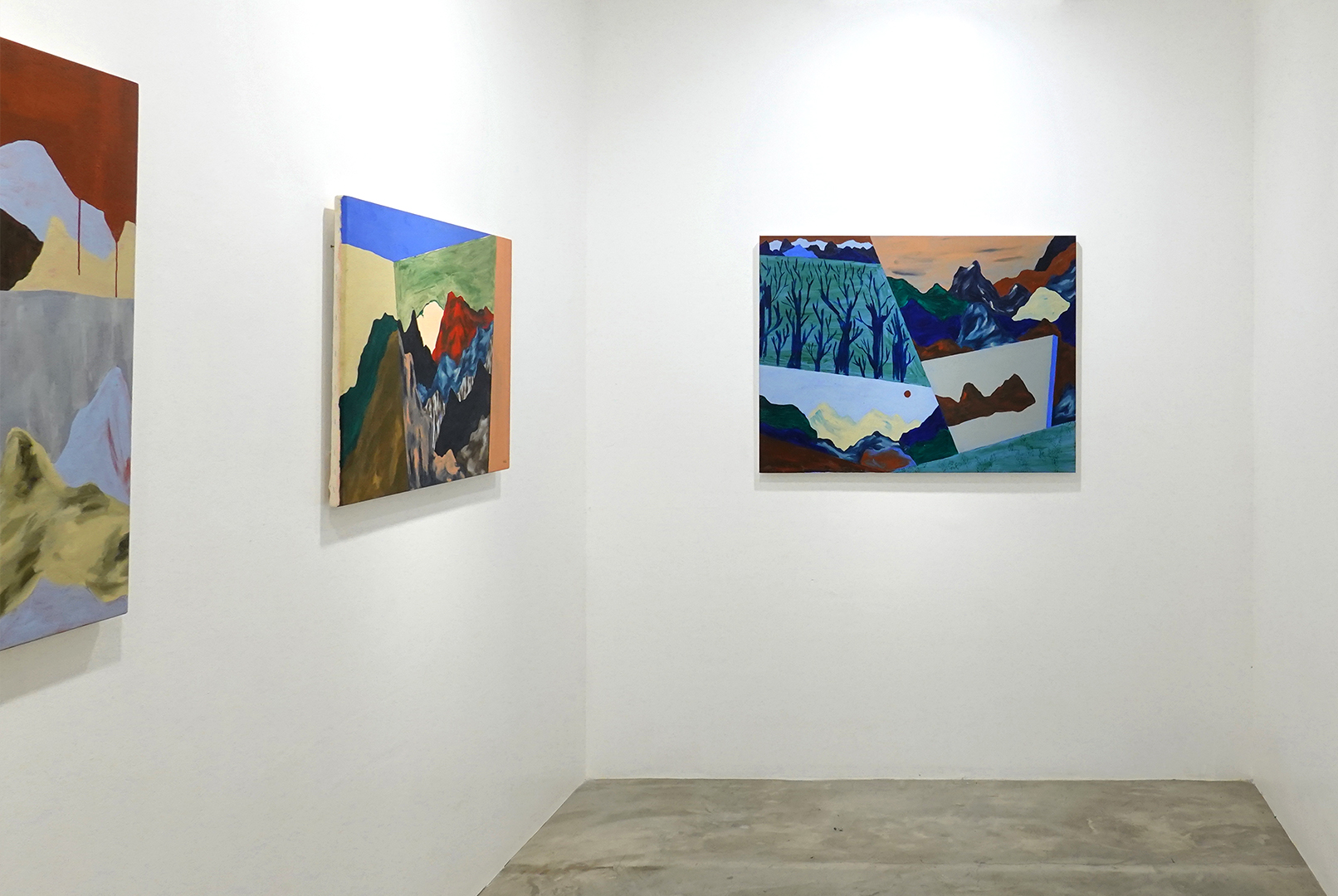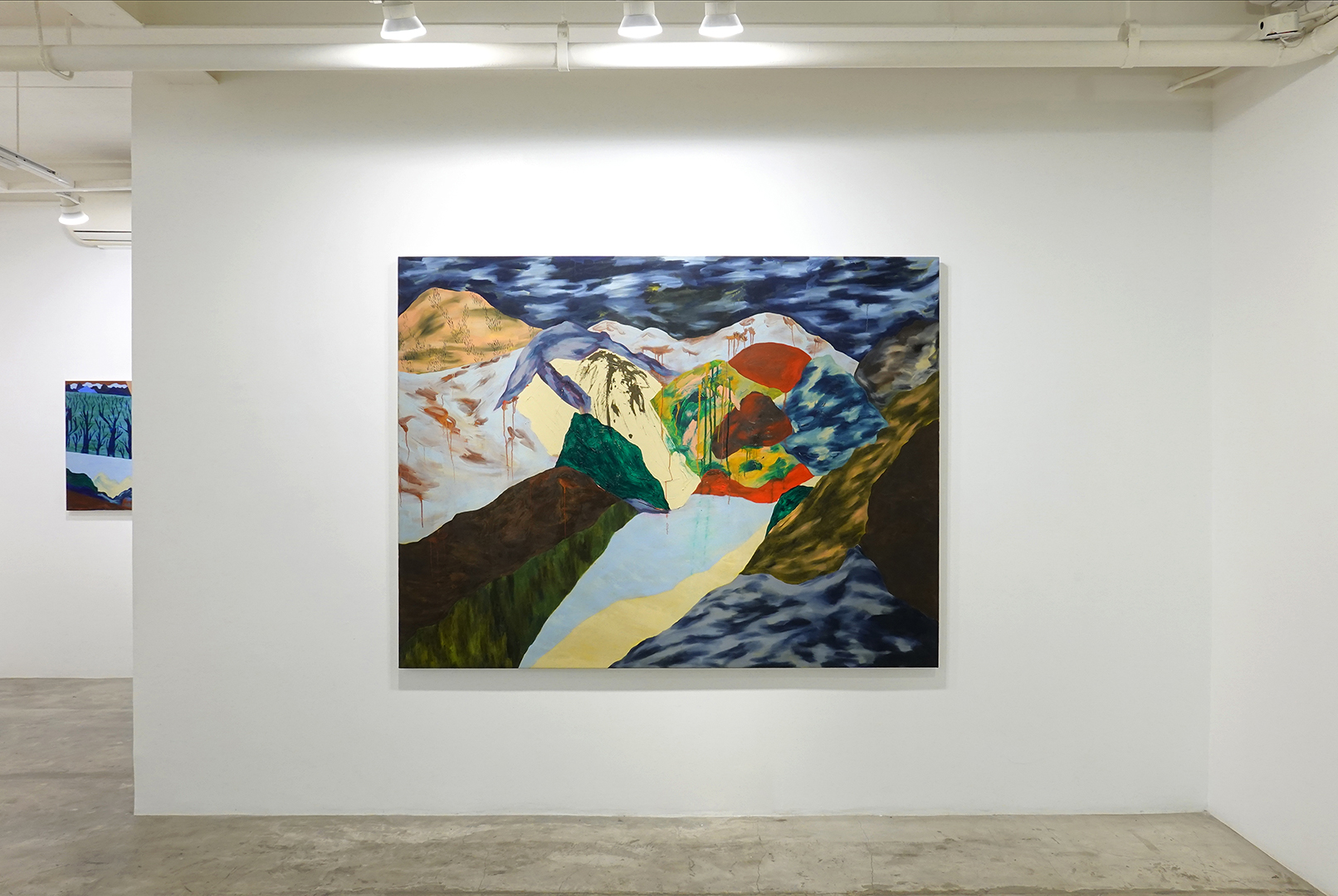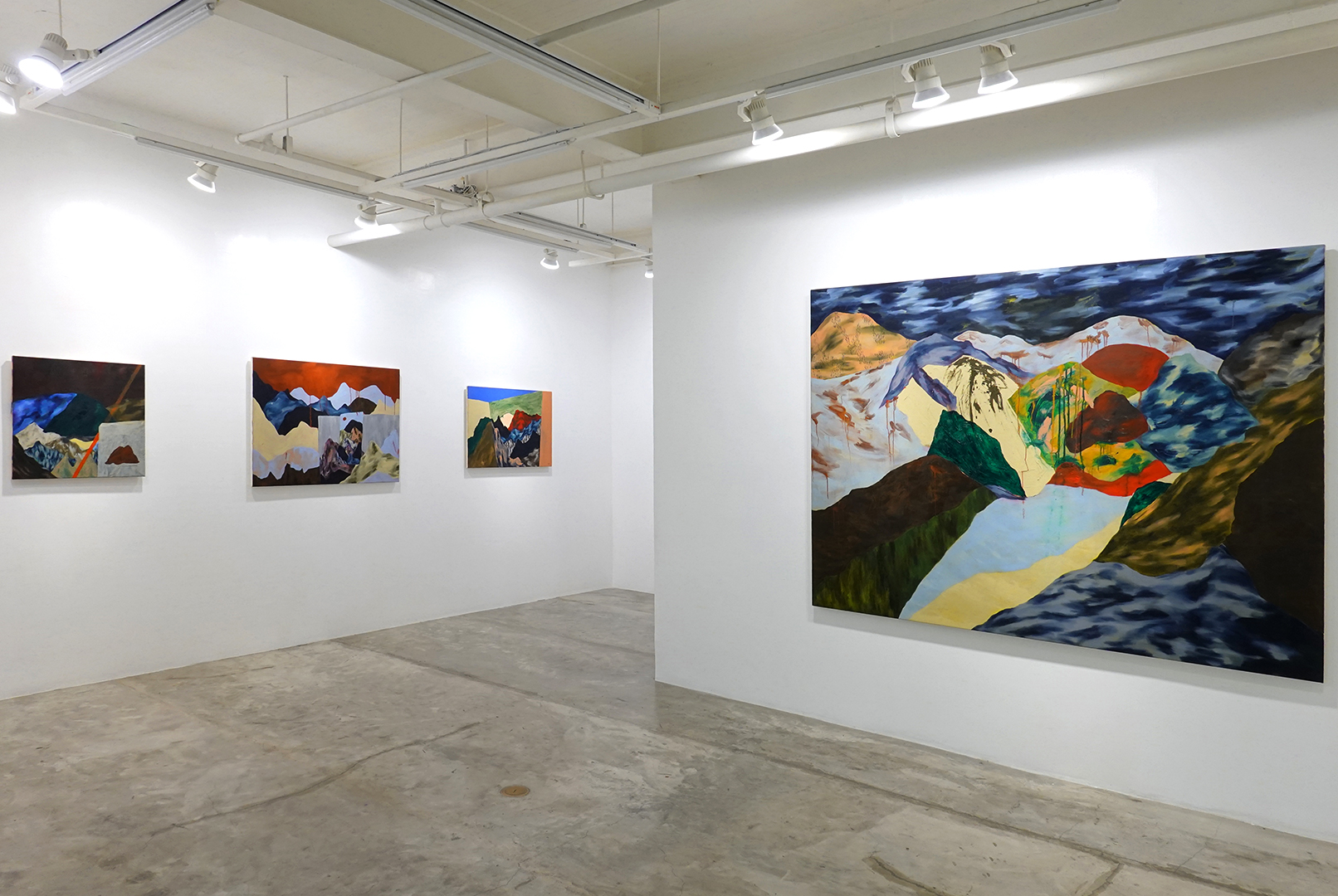The starting point of this show was to explore themes of both dislocation and a simultaneous existence in more than one place, or perhaps the fact of a moving point — me, in transit, forever oscillating between spaces — resulting in a sense of dislocation. The space collapses, the depth of a place flattens, and the layers of the space, instead of creating a sense of distance, are viewed from a pinhole, encased like an image in a photograph.
The paintings in If we opened people up, we’d find landscapes (a title stolen from Agnès Varda’s The Beaches of Agnès, which she anticipated to be her last film) began as such, with a particular interest in intersections, and unclear demarcations. I thought about creating spaces that topple into one another; a messier sort of space that is closer to what you hold with yourself, than the idyllic sort of places landscape artists like to paint and capture from real life.
Within spaces are stories, and perhaps the titles of the paintings sound like vague writing prompts. But as such, both the words and the images contain a multitude of possibilities. Matched together, another picture is formed in your head, one that is only yours, with possible intersections with another person’s picture. What I mean is this: despite physical distance or the depictions of distance, there is something that connects all of us to one another. An interconnectedness that signals something very different in each of us, furthering the stories and histories in unknowable, but no less real, ways.
Landscapes are often thought of as distant, boring, or stagnant, but I think we move along and around them. Because of movement — a moving point, in transit, forever — places become portraits; a history is written and we partake in this writing, for better or worse. We shift around spaces and change them again and again and again. The world is in constant flux, and we have always had a hand in it. We are of the earth; we are looking at our past, present, and future. All at once, and also not.

